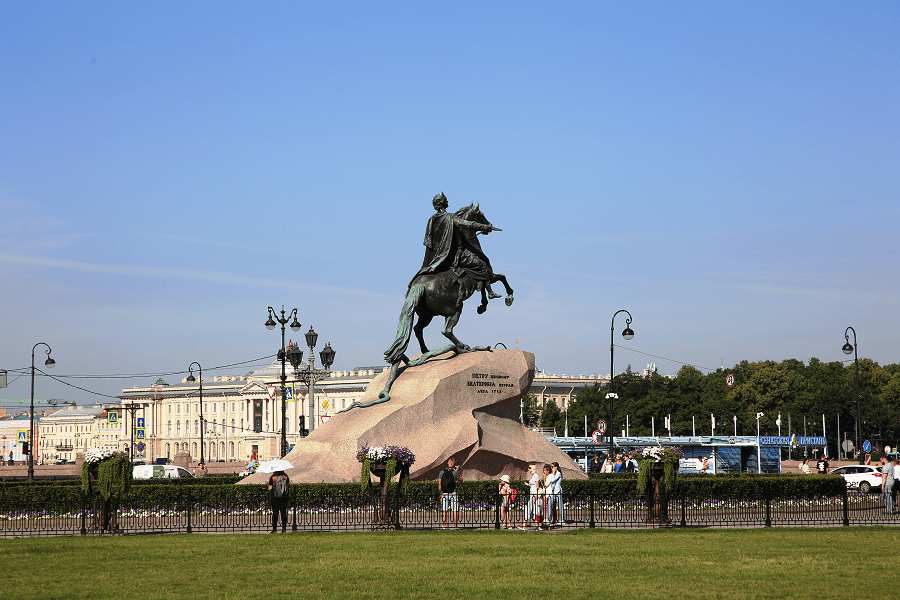The Bronze Horseman (monument to Peter the Great) is a monument to Peter I on Senate Square in St. Petersburg. Its opening took place on August 7 (18), 1782. The monument is made of bronze.
Catherine the Great, a German princess who married into the Romanov line, was anxious to connect herself to Peter the Great to gain legitimacy in the eyes of the people. She ordered its construction, and had it inscribed with the phrases Petro Primo Catharina Secunda MDCCLXXXII in Latin and Петру перьвому Екатерина вторая, лѣта 1782 (Petru pervomu Ekaterina vtoraya, lěta 1782) in Russian, each meaning ‘Catherine the Second to Peter the First, 1782.
The model of the equestrian statue of Peter was made by the sculptor Etienne Falcone in 1768-1770. The head of the statue was sculpted by the student of this sculptor, Marie Ann Collot. Fyodor Gordeev designed the snake according to Falcone’s plan. The casting of the statue was carried out under the guidance of foundry master Ekimov Vasily Petrovich and was completed in 1778. Yuri Felten carried out architectural and planning decisions and general management.
The statue’s pedestal is the Thunder Stone, the largest stone ever moved by humans. It was found in the vicinity of Horse Lakhta (suburb of the city). This is a boulder of biotite-muscovite potassium-feldspar granite, in which granite and pegmatite rocks are 1.5-1.6 billion years old.
After the stone was removed from the ground, the pit was filled with water and a reservoir was formed, which has survived to this day – Petrovsky Pond (since 2011 – a protected area). The path of the stone to the place of loading was 7855 meters.
The stone acquired its final form already on the Senate Square, having significantly lost its original dimensions after processing. Many people think that the stone is a single block, but, in fact, it consists of several blocks closely fitted to each other.
The statue is now one of the symbols of Saint Petersburg.












